Project Overview
We were tasked with reviewing the VisitScotland homepage, making recommendations to improve the user experience, while aligning brand direction with a more inspirational offering.
Requirements
The homepage should focus on inspiration, showcasing experiences alongside products and locations.
It must cater to both international and domestic content for seasonal coverage.
Prominently feature seasonal events.
Asses the new layout’s impact on page performance before implementation.
Skills:
- UX/UI Design
- User Research & Analysis
- Content Strategy & Optimization
- Agile Methodology
Approach
We worked collaboratively, across disciplines, to define an action plan to define an approach that would allow us to implement layout changes within the 5-day timeframe. This was as follows:
1. Research & Competitor Analysis
- Reviewed existing user feedback.
- Selected competitor homepages for new user testing.
2. User Testing
- Users reviewed 3 competitor homepages, including our own.
- Users ranked homepage content by importance and identified unnecessary content.
3. Wireframing
- Discussed the user testing feedback.
- Created wireframes based on initial research and past testing.
4. Recommendations
We refined the structure and layout to balance user and business needs.
We evaluated each section’s content for SEO and engagement.
Research & Competitor Analysis
We reviewed our current homepage and discussed the pain points and the requirements we had to define the sprint goal. This allowed us to start creating a new layout, with these current pitfalls in mind.
After reviewing our homepage, we looked into our competitors’ websites and selected key modules and sections that added value to the page.
Highlighted Features
- Categorised Destinations
- “Save your favourites” widget
- Category tabs on cards
- Average reading time
- Magazine section
- Create your journey widget
- Regional Map
- Seasonal content
- Things to do Canned Search
- Recommendations from locals
- Travel Advice content
User testing
We wanted to find out what sections users expected to see on a homepage, and in what order, as well as general feedback on things like images and copy length/ page scroll.
We set out a test in UserZoom (our user testing platform) that covered the above and would be used to validate decisions and help inform the final layout recommendations
Wireframing
While we were waiting on the user testing results, we created wireframes based on initial market research and user testing and completed them once we collated the feedback from user testing.
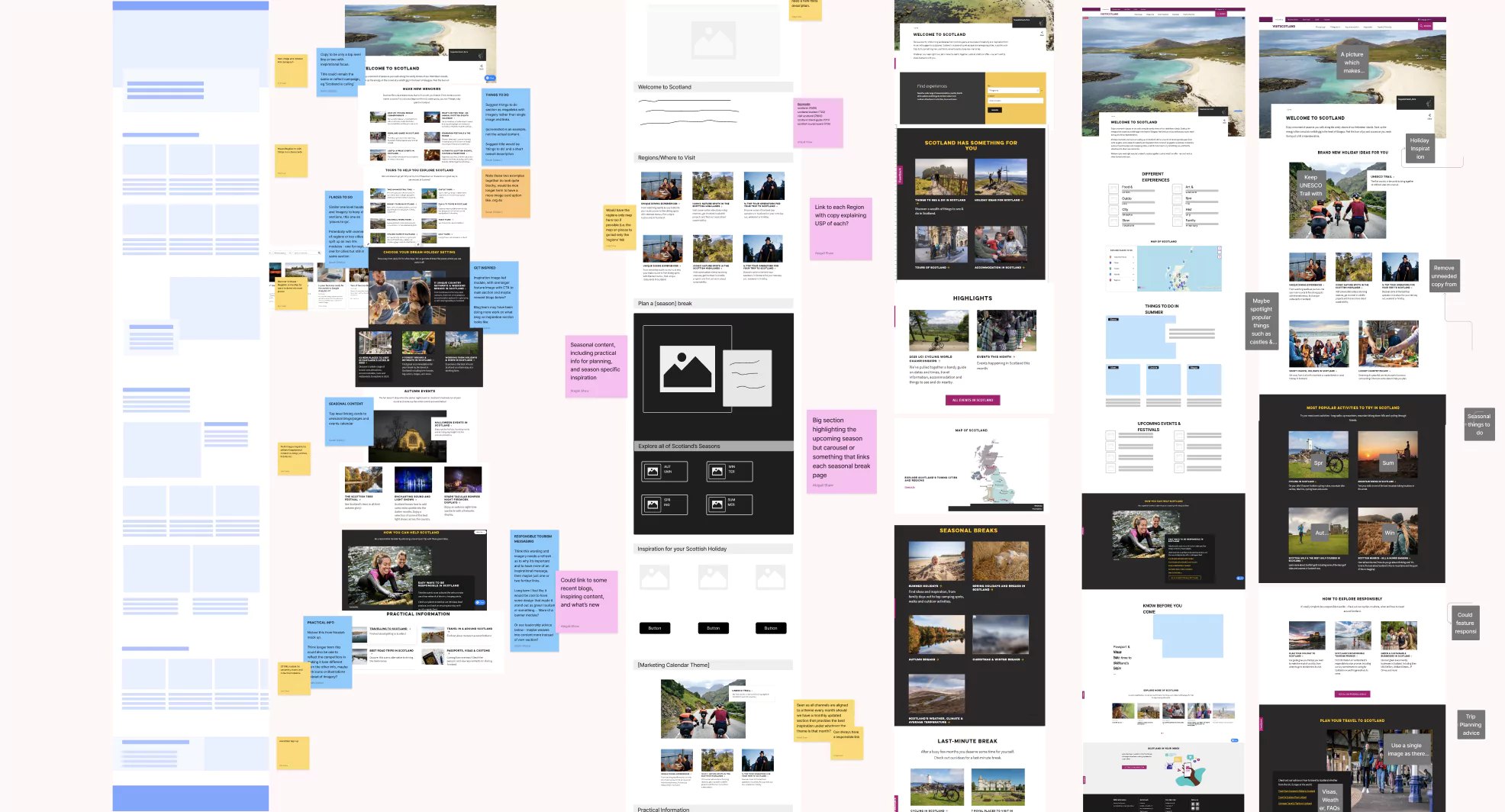
Recommendations
We collated the feedback from user testing and used this information to complete our mockup. We also added recommendations for future releases. These are some examples:
1.
The general feedback between mobile and desktop did differ.
We recommended that an adaptive design with device-specific layouts should be developed beyond the current responsive design.
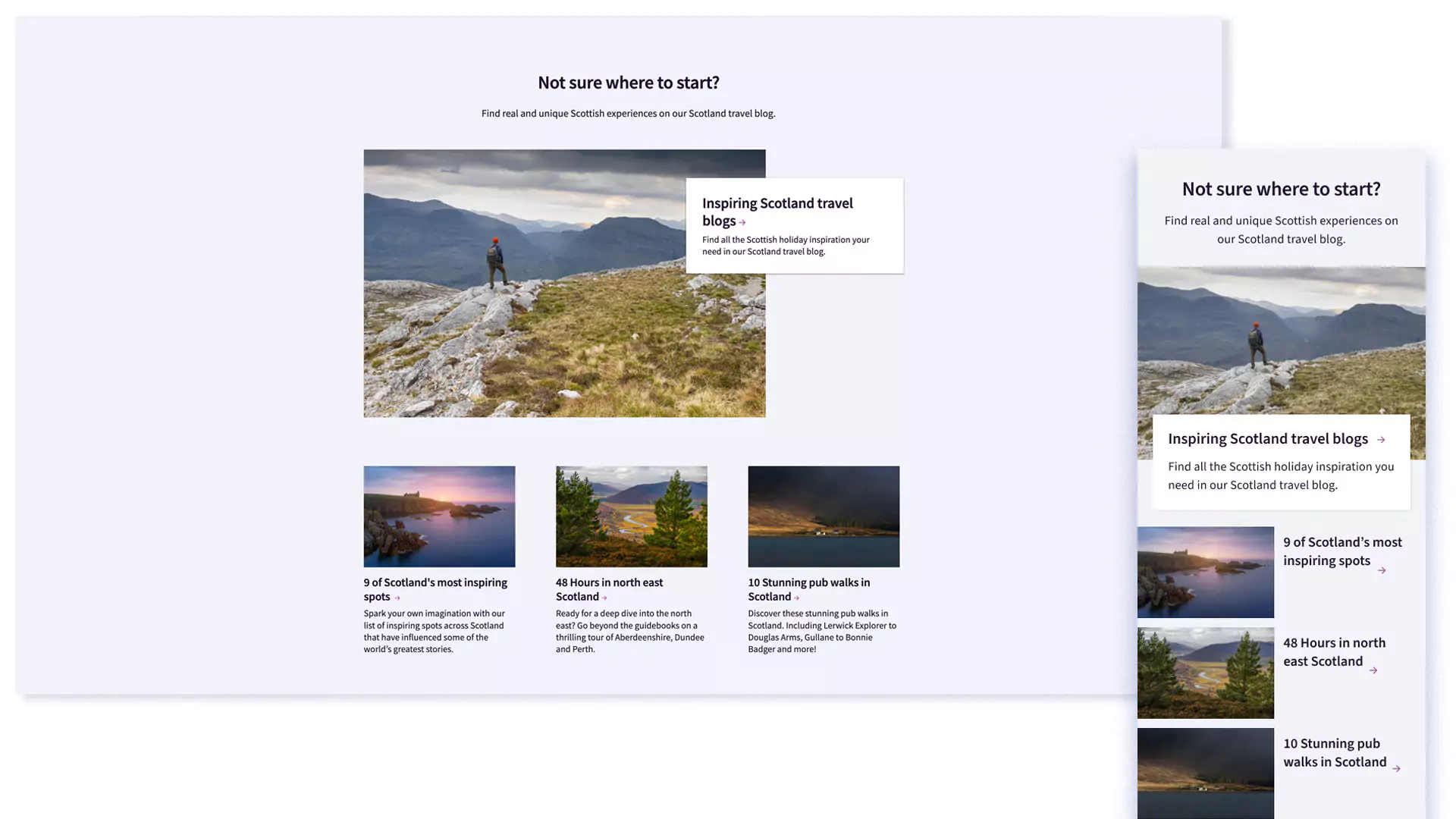
2.
Presenting seasonal content will help users decide when to visit Scotland.
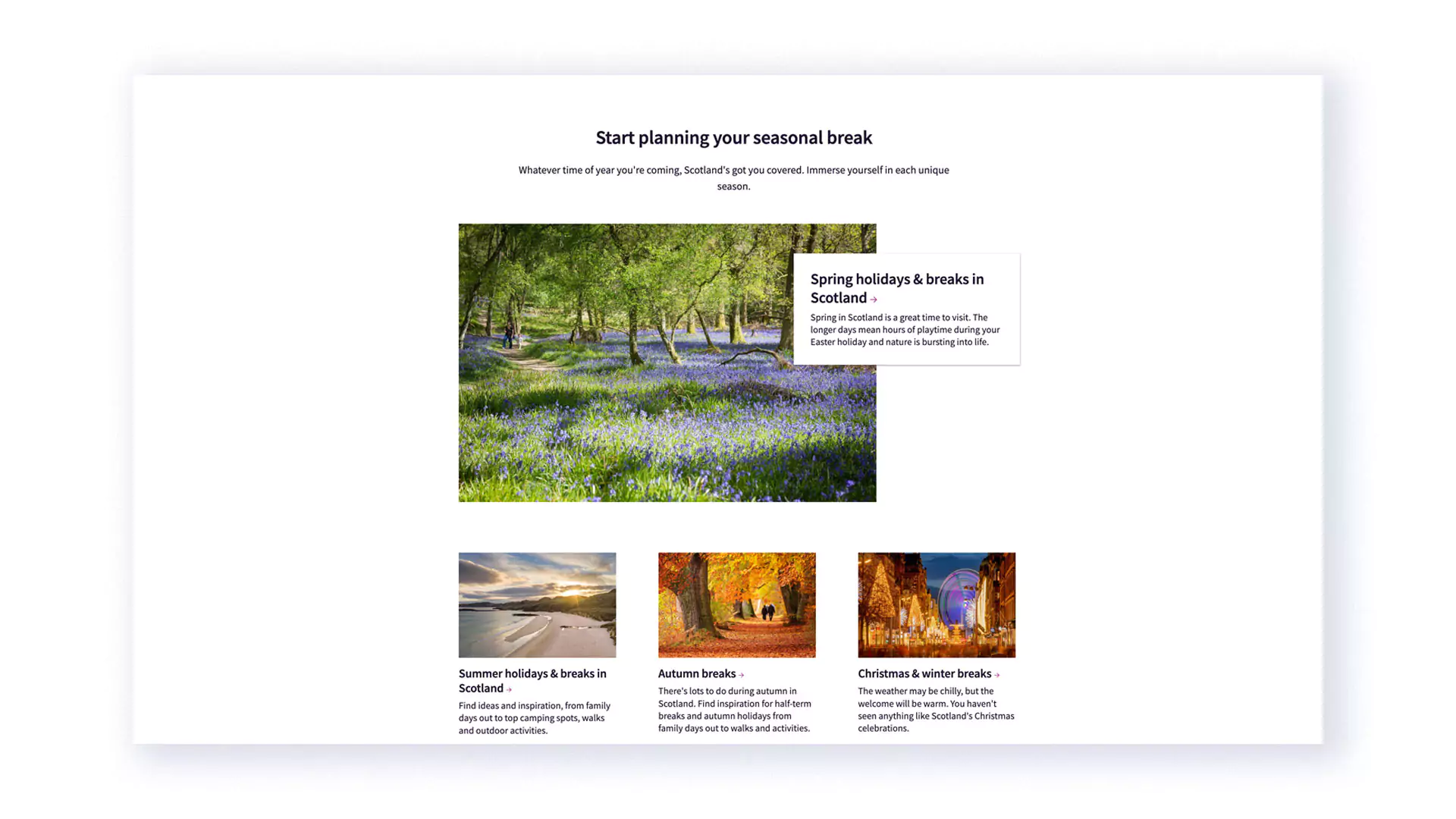
3.
Having an inspirational content section will get users excited about visiting Scotland and the wider site.
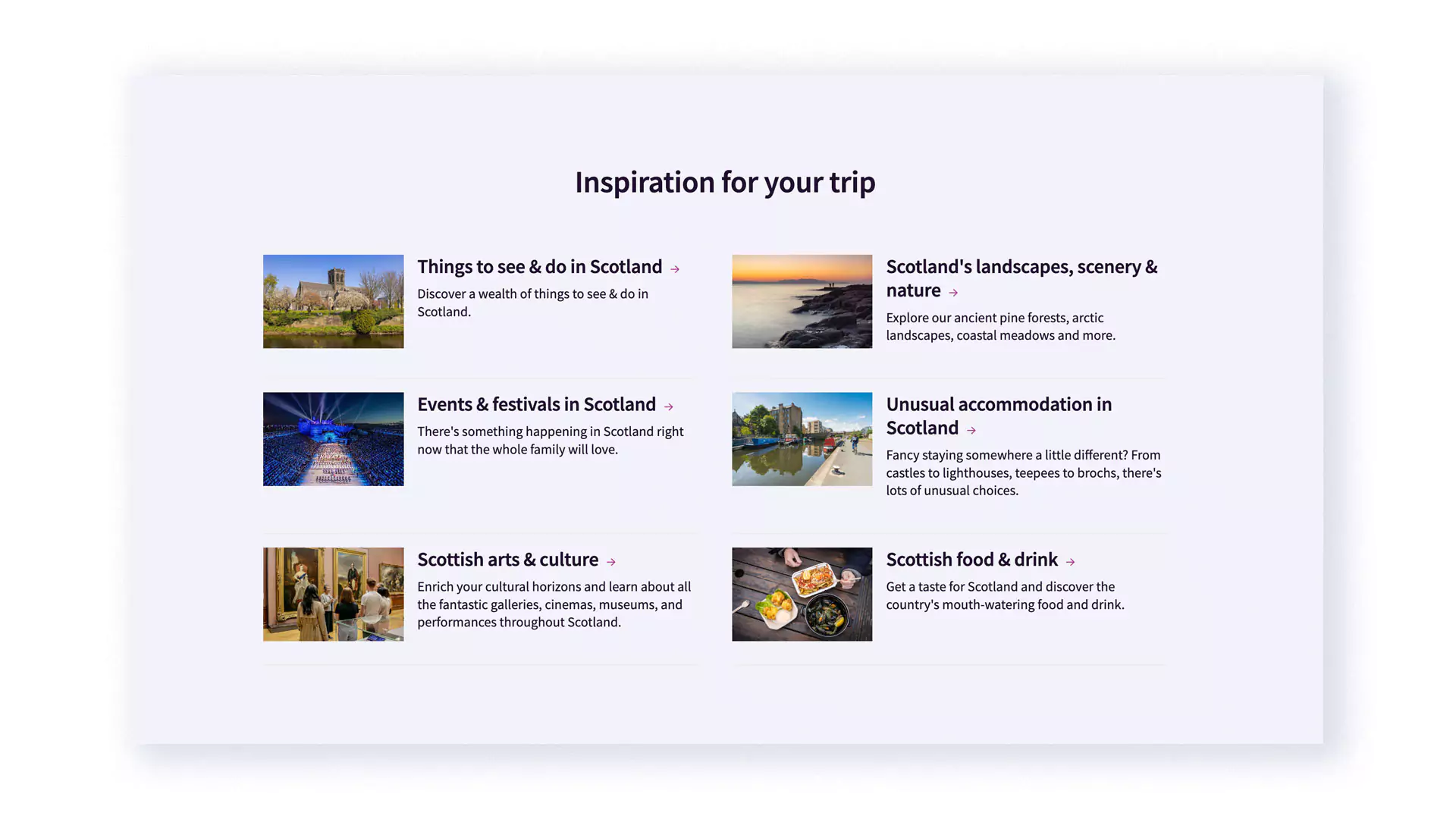
4.
Users prioritised links to key pages on the homepage for easy navigation. We added a section on the homepage with useful information that the users couldn’t find on the menu.
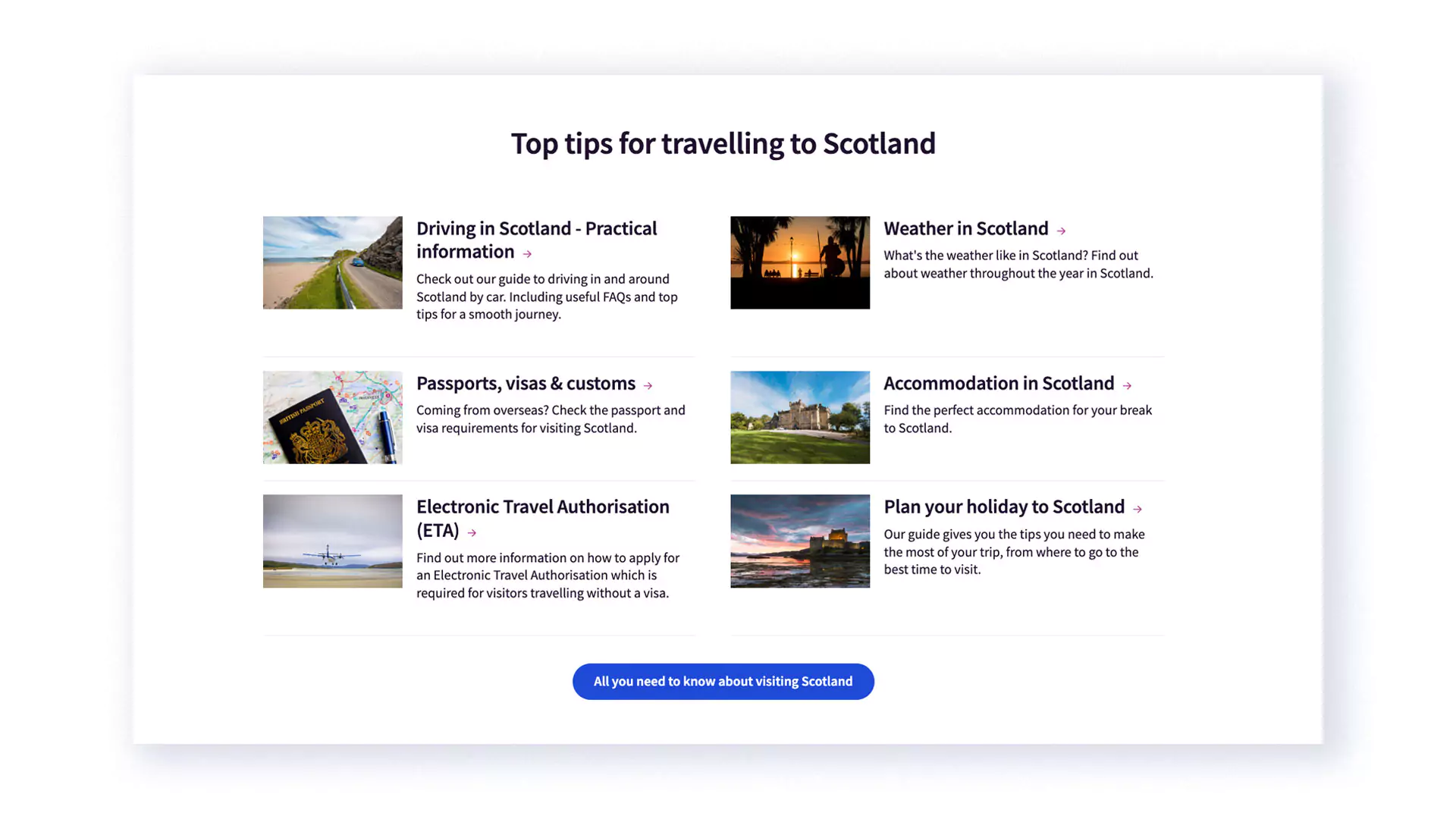
Outcome
Following an Agile methodology, we improved the homepage experience, working closely with a cross-functional team. Through rapid research, user testing, and wireframing, we optimized navigation and engagement. The homepage will have ongoing iterations and future testing will be done to keep refining the experience.
